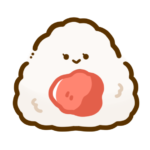“One-soup One-dish (一汁一菜)”: A Simple Japanese Idea to Make Cooking Easier

Do you sometimes feel too exhausted to cook, or even to think about what to cook after a long day? Feeling overwhelmed by esthetic and healthy meals on Instagram and YouTube?
If any of them resonates with you, you are far from alone. It would be natural to feel stressed out by ubiquitous messages like “cook beautiful and balanced dishes every single day, for yourself and your family.”
I had also been there… until I learned the essence of “one-soup one-dish.”
This article will explore what this concept means and some practical ways to incorporate this idea into your meals. After reading this, your barrier to cooking will probably be mitigated and you will feel more at ease.
What is “one-soup one-dish”?
“One-soup one-dish (一汁一菜, ichijyu-issai)” is a Japanese traditional meal style that consists of rice, miso soup, and one side dish such as pickles.
The history of this meal style goes back to Zen practices among Buddhists in the Kamakura Period, which values frugality and simplicity. It gradually spread to citizens from the Edo Period, which then faded away because of modernization and the Westernization of Japanese diets.
Lately, however, it was brought up again by Yoshiharu Doi, a Japanese chef and food consultant.
His most-renowned book went viral domestically, in particular among many Japanese housewives who were feeling pressured to always plan and cook balanced dishes.
What is remarkable is that the author suggests “one-soup one-dish” not as a mere diet plan but as a core Japanese philosophy of living, composed of simplicity, seasonality, esthetics, modesty, and appreciation for nature.
It’s highly recommended to put multiple wholesome foods into the soup (e.g., tofu, seasonal veggies, and mushrooms). In this way, miso soup already functions as a nourishing dish. Adding one side dish (traditionally pickles to pair with the rice) would be enough.

Putting it into practice
His suggestion is quite practical and can be applied to a wide range of cuisines beyond Japanese ones. As he puts it, “one-soup one-meal”i is a style. Once you master this fundamental style, you can mix and match as you like.
Have no clue where to begin? Start by just whisking miso in hot water, the most basic form of miso soup, and serve with rice and any leftover dish in your fridge. Ta-da!
Most people assume miso soup should have “dashi (soup stock generally with kombu kelp or bonito fish).” According to him, however, it’s not necessarily true with everyday soup because miso, just as is, already has a rich aroma and umami from its fermentation process.
Doi claims making dashi from scratch is one of the mental barriers among most people. He emphasizes that if we can appreciate the simple richness of miso, it’s already enough as a default soup. If you feel like it or for special occasions, you get to make dashi. It’s up to you, not and everyday obligation.
Common questions

Isn’t it boring to eat “one-soup one-dish” every single day? I wonder if my meals become monotonous…

No worries! “One-soup one-dish” is more of a default style rather than a set of hard and fast rules.
If you prefer and have energy, you can increase the amount of side dishes to two or three. If it’s a special occasion such as welcoming guests, you can make dashi from scratch or make everything visually more attractive.
Putting various seasonal ingredients is another wonderful method to spice things up, which would bring you small joy and a sense of connection to nature.
The point is to make your default style easy and sustainable so that it allows you to maintain both of your physical and mental health.


My day-to-day meals are bread/pasta/oatmeal. Would “one-soup one-dish” still work for me?

Yes! As long as you keep the basic style in mind, it’s absolutely possible to mix and match.
You get to swap rice with bread or oatmeal. You get to pair a small portion of soup with noodles or Buddha bowls. If miso soup is not your thing, apply this style with other simple wholesome soups such as soy sauce soup, salted koji soup, or your favorite soup.
Go flexible and creative. Again, it’s not something fixed like rules.



Conclusion
This article illustrated “one-soup one-meal” the ancient Japanese concept of eating and life, and how you can apply it to customizing your meals. Hopefully, this simple traditional idea would help you feel less stressed about meal planning, cooking, and perhaps, life in general.
If you are curious about Yoshiharu Doi, check out the interview video with English subtitles from here.
References
- Article “Taste of Simplicity: Japanese One-Soup One-Dish Cuisine”
- Book “Ichijyu-issai de yoi to iu teian [Suggesting Ichijyu-issai]”








Your words make my day!